Phenotyping the crackability of walnuts
What is the most commercially desirable shape for a walnut? What are the morphological characteristics that make a walnut yield easily its kernel as two intact pieces instead of having its kernel exploding into a million pieces? This project sought to link morphological traits with three traits of commercial interest: ease of kernel removal, shell strength, and kernel-to-total weight ratio.
The setup
In collaboration with the Walnut Improvement Program at the University of California—Davis, we got access to 149 accessions represented across 1301 individual nuts. These were X-ray CT scanned at Michigan State University. After a lot of image processing fiddling, we managed to digitally segment out the shell, packing tissue, inner air, and kernel from each nut. Separately from the walnuts scanned at MSU, the same accessions were evaluated for traits of breeding interest by cracking open 10 samples per accession and averaging the results.
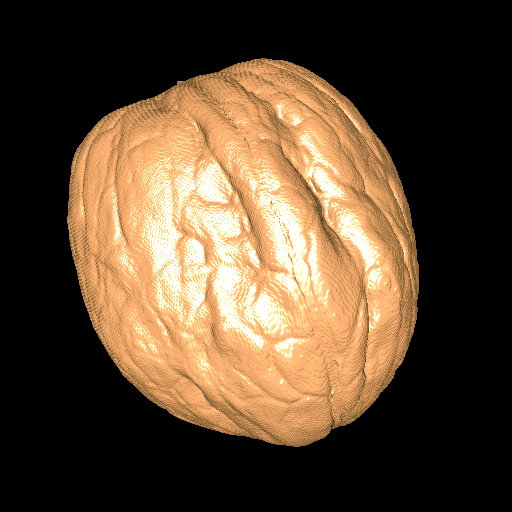
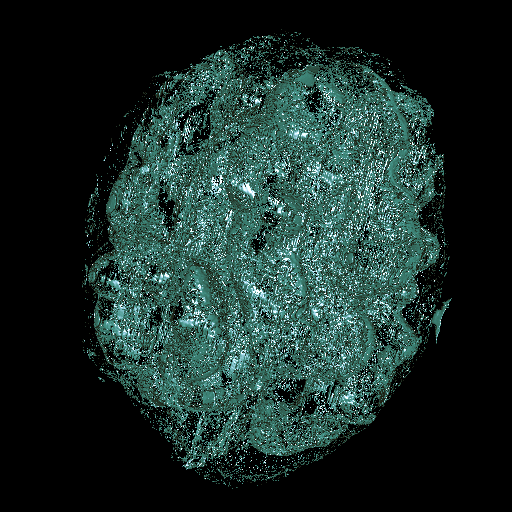
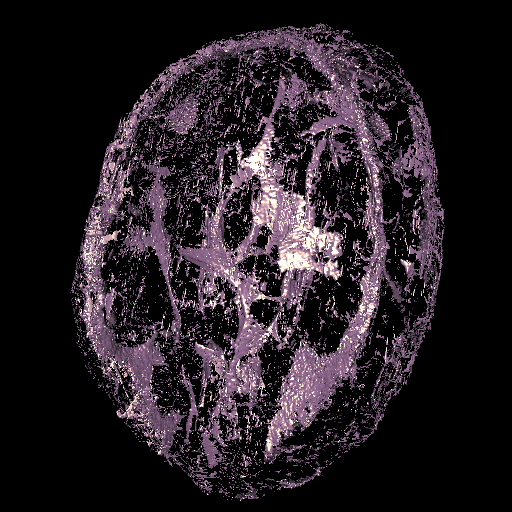
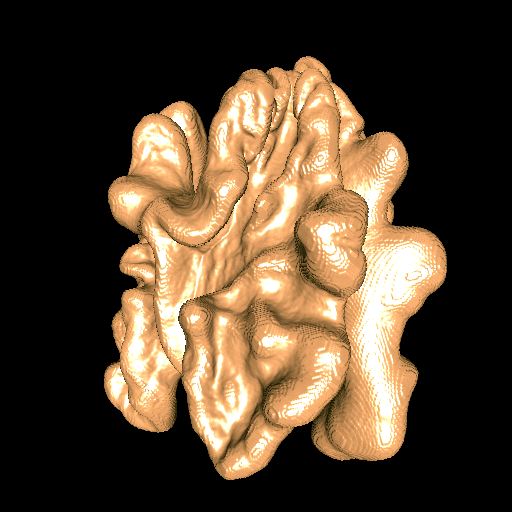
The power of allometry
We do not grow isometrically. Whenever a child doubles their height, their arms and legs do not simply double in length; their weight does not simply double. Instead, different tissues and body parts grow at different relative rates from each other. We grow allometrically. Relative growth can be modeled as a power function. We humans are not unique in this regard. Quite the opposite, all the observed animals and plants so far do grow allometrically. Allometric growth can even be observed in cities and urban planning! Check out Geoffrey West "Scale" for an awesome treatise on allometry for general audience.
Walnuts are not the exception. For instance, if nut volume doubles, then air volume increases by 2.3x. We cannot have a walnut with more air than nut, so following the power law, we see that walnut diameter cannot go beyond 15cm (a small cantaloupe). Similarly, if nut volume doubles, then kernel volume only increases by 1.8x. There must be some biophysical constraints at play here: it is not a matter of breeding for bigger walnuts because these will have mostly air.

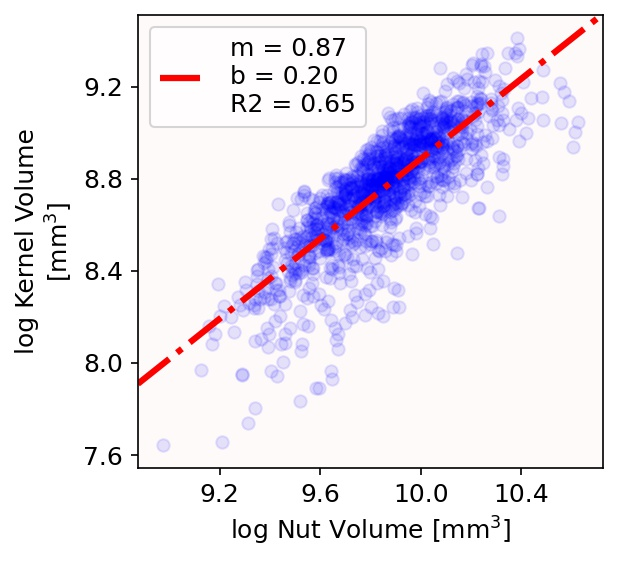
Step-wise linear regression
We want to link our size and shape related traits to those of commercial interest. Moreover, we want to determine which 3-4 morphological traits might be the best indicators of commercial desirability, as walnut breeders don't have access to an X-ray CT scan machine in the field to evaluate 49+ values at a time. We performed a step-wise linear regression precisely to tease apart the impact of individual traits. It works as follows:
- Fix a commercial trait as variable to explain.
- Limit the run to only traits significantly correlated (Spearman) to the trait from step 1.
- Perform a linear regression using only one morphological trait as an explanatory variable.
- Check the R2 coefficient to see how good of a choice that was.
- Repeat steps 3-4 for all individual morphological traits
- Pick the trait with the best R2 score
- Repeat steps 3-6 for all possible pairs, trios, etc.
¡Published work: Amézquita et al. (2024)!
DOI: 10.1002/ppj2.20095
—
As slides: Presented at the IPG Plant Talks. University of Missouri, Columbia, Missouri. October 2023.
As a poster: Presented at the CAFNR Research Symposium. University of Missouri, Columbia, Missouri. October 2023.
—
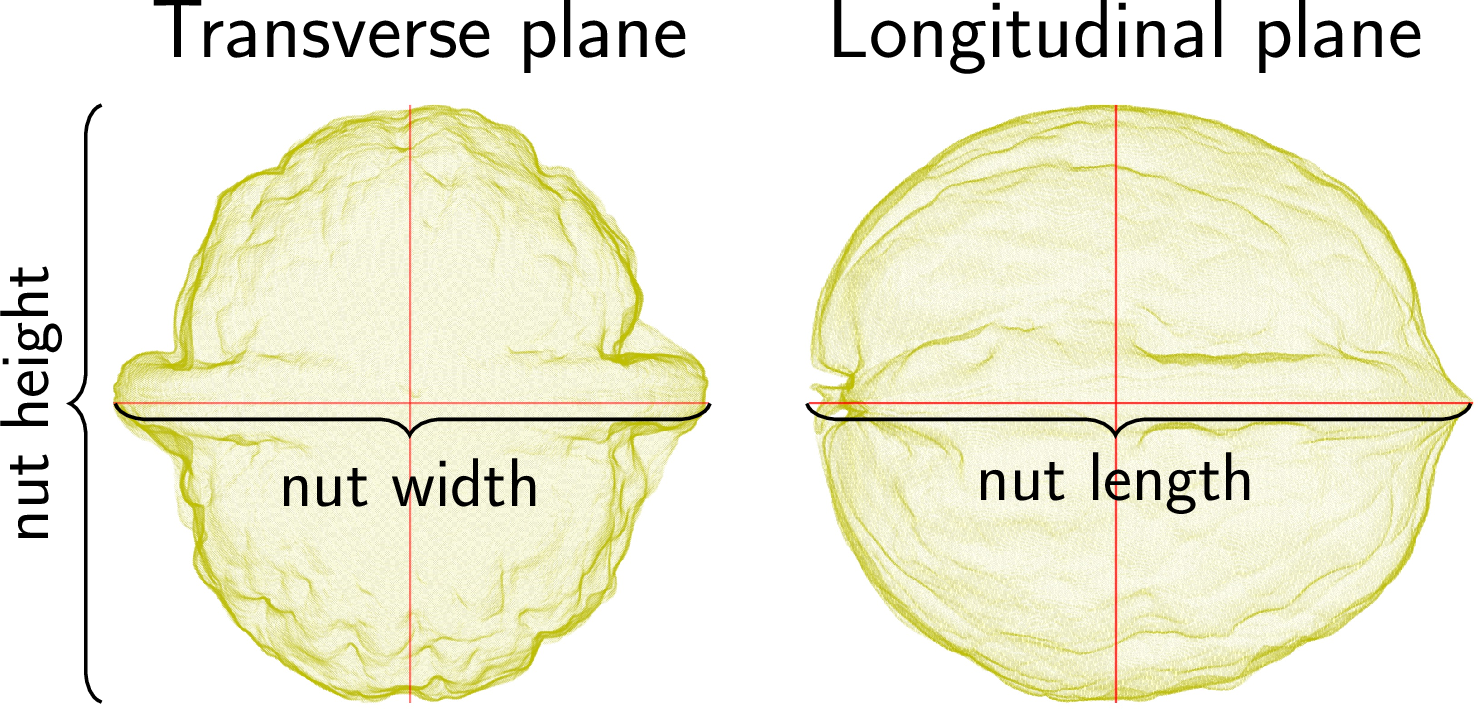
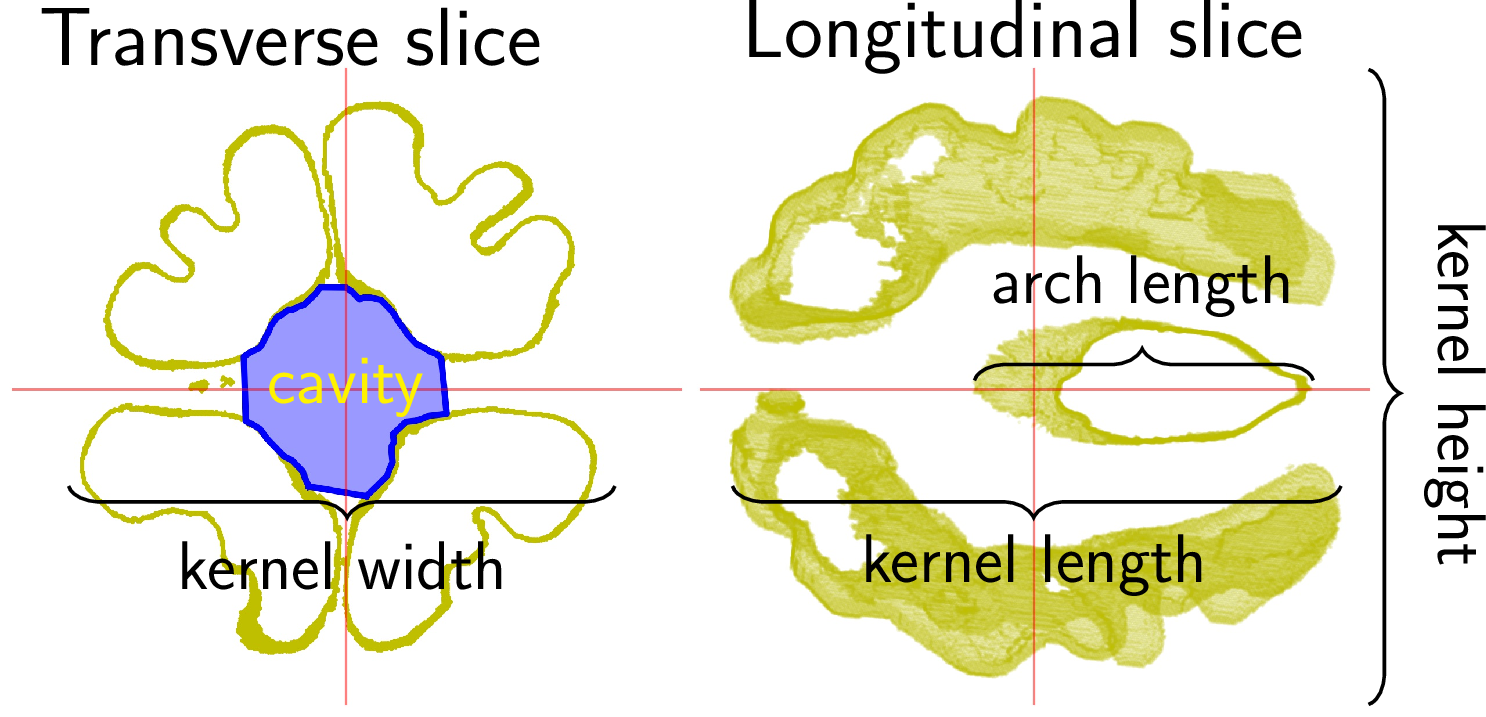
——————————
Other research projects
- The crackability of walnuts: all about shape, in a nutshell
- Sub-cellular transcriptomic patterns
- The early dodder gets the host
- Quantification of barley grain morphology
- Global disparities in plant biology research
- Mapper to unravel the shape of omics data
- The intersection of Topological Data Analysis and Biology
- The shape of citrus fruits and modeling their oil gland distribution
- Archaeological artifact classification and the Euler Characteristic
